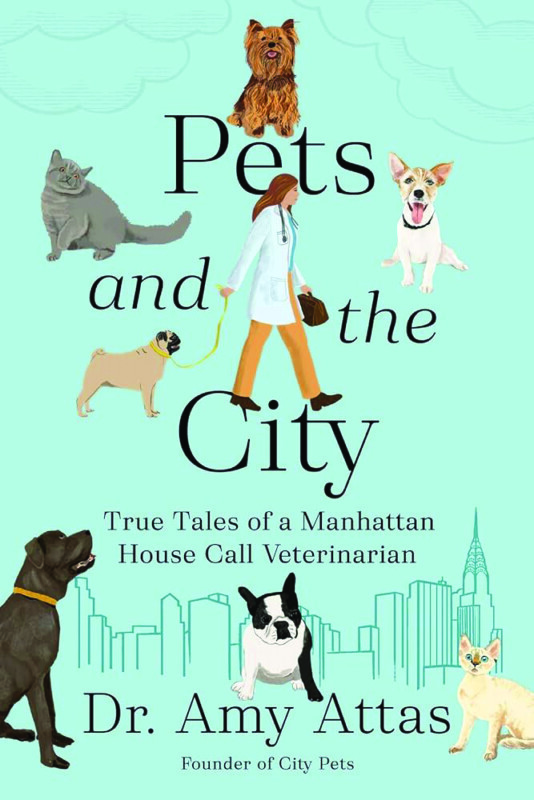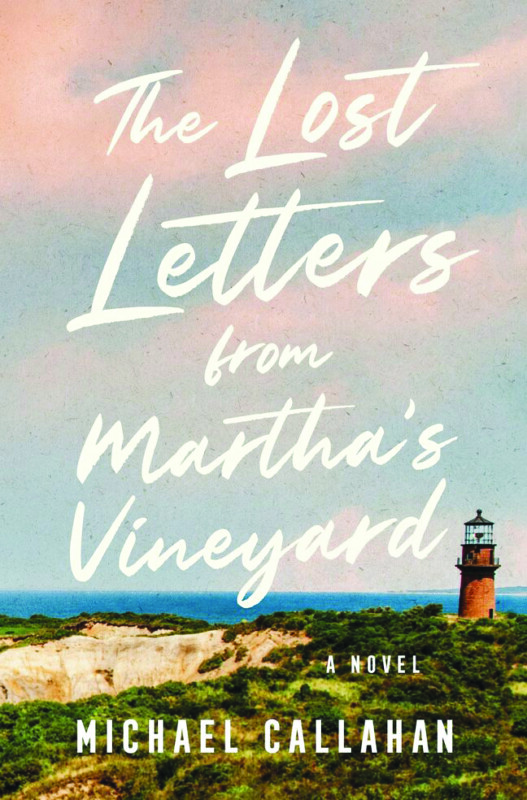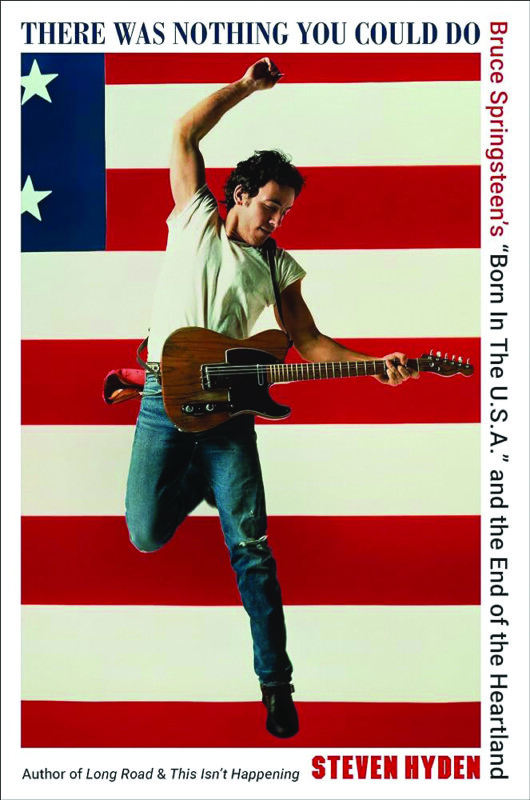Pets and the City, by Dr. Amy Attas (G.P. Putnam’s Sons, 311 pages)
The rich are different from you and me, except when their dog gets diarrhea or starts limping, and then they panic just like the rest of us do and call a vet.
Well, since they’re rich, they summon a vet to their brownstones and summer homes, and a lot of the time, when they do that in Manhattan, it’s Dr. Amy Attas who shows up.
Whether you’re wealthy or just-gettin’-by, Attas is the kind of vet you want: a person who was pretending to give injections to her stuffed animals as a child, who started working as an assistant at an animal clinic and age 13 and considers James Herriot’s All Creatures Great and Small as holy writ. She was born for this profession. It turns out, she can write, too.
Attas’s first book is a memoir that moonlights as a tell-all gabfest, spilling the tea on her most interesting clients and former bosses, albeit in a way that won’t get her sued. She has a lot of stories to choose from, having worked in New York City for more than three decades. The official tally is 7,000 families and more than 14,000 pets, most of which were house calls and which included celebrity clients like Joan Rivers, Billy Joel, Elton John, Paul McCartney and Steve Martin.
Mattas started her business, City Pets, after getting let go by an Upper East Side practice run by a man who promised to make her a partner but then abruptly fired her, apparently because he was jealous that his VIP clients were asking for Attas instead of him. (Every story needs a villain, and this guy, identified only as Dr. B, certainly qualifies.)
The day after Attas was let go, when she was still mulling what to do, two of her former clients tracked her down and asked for house calls. The day after that, she had four more homes to visit, even though this was before house-call practices were common in veterinary medicine. She kept at it, and placed a few ads, and eventually worked up the nerve to call Joan Rivers, who’d been a client at Dr. B’s business, and to tell the comedian she was available for house calls for Spike, the Yorkie who traveled with Rivers everywhere.
“What happened?” Rivers asked, and Attas answered, “Do you want the long story or the short version.” To which Rivers replied, “I want every single detail, and I promise you every single person on the Upper East Side is going to know every single detail, too.”
And with that, City Pets was off and running; no word on what happened to the notorious Dr. B.
For an Ivy League-educated veterinarian who serves a largely privileged clientele, Attas is surprisingly down-to-Earth and willing to dish on humiliating moments, like the time the urine of a male cat soaked her during an exam just before a date, and her genuine, child-like excitement every time a new client turned out to be a celebrity. When she went to a hotel to treat the pug of a yet-unknown VIP — she was told to ask for John Smith at the front desk — Billy Joel answered the door and said, “Hi, I’m Bill.”
While she replied calmly, Attas writes that “Inside, my thoughts were screaming Holy moly! It’s Billy Joel! BILL-Y JOEL! Looking and sounding like … Billy Joel!!!”
She also confesses that, in her scramble to get to the hotel, she forgot her stethoscope and instead of admitting to it, pretended to check the dog’s heartbeat with blood pressure headphones.
It is this kind of vulnerable disclosure that makes Pets and the City quirky and charming; the book’s subtitle is “true tales of a Manhattan house call veterinarian” and we don’t doubt the true part since, in addition to animal stories, Mattas is also telling us how she pretty much badgered her future husband into dating her after they met when his puppy took ill, how she fainted while watching another veterinarian draw blood, and how she once removed dew claws off a litter of 12 two-day-old puppies after letting them suck on Q-tips soaked in sweet wine.
Many of these tales are not so much stories as they are confessions.
The celebrities’ pets are interesting enough, as are the friendships that Mattas forms with some of their famous owners. But the stories I found most interesting were just ordinary cases — the Siamese cat named Itchy undergoing chemotherapy for intestinal lymphoma, the Cavalier King Charles spaniel named Chowder with heart disease — the lengths to which people will go to keep a pet alive for a few more months or a few more years.
And the owners themselves, of course, are a large part of the story, like the woman who, after her terminally ill cat was euthanized, threw herself on the floor and started screaming that she didn’t want to live anymore. (Mattas searched the house until she found prescriptions, and then called the woman’s psychiatrist for help.) A much more touching story of euthanasia comes when Mattas unexpectedly goes to the house of the late Elie Wiesel, the Holocaust survivor and author of Night, among other books, while the family is agonizing over whether to put a beloved cat to sleep.
The Wiesel encounter is poignant, but for the most part, Pets and the City, like its author, doesn’t take itself too seriously. Mattas did not try to build a lofty narrative arc in which she and the people in her life undergo great and meaningful changes. She just tells entertaining stories, as if sitting around the dinner table with her readers, sharing what happened that day at work.
As such, there are no real lessons to learn here, other than that there are people who are even crazier about their pets than we are. And if you ever have a pet emergency while visiting Manhattan, don’t call Dr. B. B






